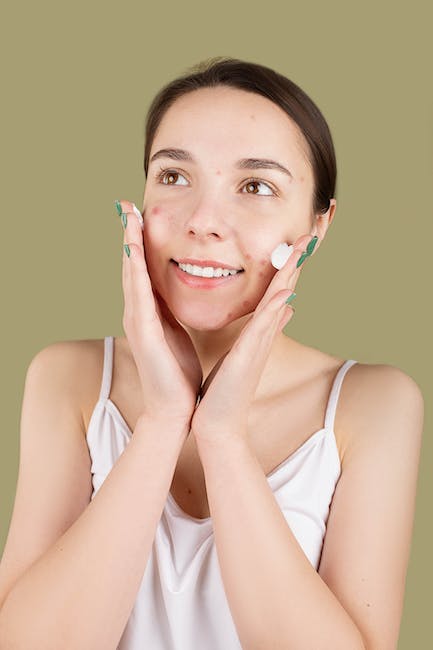LED Light Therapy for Hyperpigmentation: Brightening Dark Spots
Introduction
Hyperpigmentation refers to the darkening of certain areas of the skin caused by an excess production of melanin. This condition can occur due to various factors, such as sun exposure, hormonal changes, acne scarring, and inflammation. While there are several treatments available to reduce hyperpigmentation, LED light therapy has gained significant popularity in recent years. In this article, we will explore how LED light therapy can effectively brighten dark spots and improve the appearance of hyperpigmentation.
Understanding LED Light Therapy
LED light therapy, also known as phototherapy or photobiomodulation, involves the use of specific wavelengths of light to stimulate cellular activity. This non-invasive treatment method is widely used in dermatology to address various skin concerns, including hyperpigmentation.
LED light therapy works by penetrating the skin at different depths to stimulate the production of collagen and elastin, which are essential for maintaining skin elasticity and firmness. By targeting the underlying causes of hyperpigmentation, this treatment can effectively minimize the appearance of dark spots and even out skin tone.
The Role of LED Light Therapy in Hyperpigmentation Treatment
LED light therapy offers several benefits that make it an excellent treatment option for hyperpigmentation:
1. Reduces Melanin Production
LED light therapy targets the melanocytes, the cells responsible for producing melanin. By emitting specific wavelengths of light, this therapy helps to regulate melanin production, thereby reducing the intensity of pigmentation in the treated areas. Over time, regular sessions can lead to a noticeable reduction in hyperpigmentation.
2. Promotes Cellular Regeneration
LED light therapy promotes the regeneration of skin cells, helping to accelerate the natural healing process. By increasing the production of collagen and elastin, it assists in repairing damaged skin and fading dark spots caused by hyperpigmentation. This leads to a more even complexion and a reduction in the appearance of pigmentation.
3. Minimizes Inflammation
Hyperpigmentation can often be accompanied by inflammation, making the condition more challenging to treat. LED light therapy has anti-inflammatory properties that help calm the skin and reduce redness and irritation. By alleviating inflammation, this therapy aids in brightening dark spots and improving overall skin tone.
4. Safe and Non-Invasive
Unlike some other treatment options for hyperpigmentation, LED light therapy is completely safe and non-invasive. It does not cause any damage to the skin’s surface or require any downtime, making it suitable for all skin types. This gentle yet effective approach makes LED light therapy an attractive choice for individuals seeking a non-aggressive treatment for hyperpigmentation.
How to Use LED Light Therapy for Hyperpigmentation
LED light therapy can be administered in a professional setting by a dermatologist or aesthetician. Additionally, there are handheld LED devices available for at-home use. Here are some key points to consider when using LED light therapy for hyperpigmentation:
1. Consultation with a Professional
Before starting any treatment, it is advisable to consult with a dermatologist or a professional trained in LED light therapy. They can assess your specific skin concerns and recommend the most suitable treatment plan, including the appropriate light wavelength.
2. Consistency Is Key
To achieve optimal results, it is crucial to be consistent with LED light therapy sessions. Regular treatments, typically done once or twice weekly, are necessary to stimulate cellular activity and gradually reduce hyperpigmentation. The duration of each session may vary based on the device used and the intensity of the light.
3. Preparing the Skin
Before each session, ensure your skin is clean and free of any makeup, creams, or lotions. This allows the LED light to penetrate the skin more effectively and maximize the benefits of the treatment. Gently cleanse your face and pat it dry before commencing the therapy.
4. Protecting the Eyes
LED light therapy devices emit bright light, so it is essential to protect your eyes during the treatment. Most devices come with built-in safety features, such as goggles or eye shields. Make sure to follow the instructions provided and take precautions to shield your eyes from direct exposure to the LED light.
Conclusion
LED light therapy offers an effective and non-invasive solution for treating hyperpigmentation. By targeting the underlying causes of dark spots, this therapy stimulates collagen production, promotes cell regeneration, reduces inflammation, and helps in achieving a more even complexion. Whether administered in a professional setting or with at-home devices, consistent LED light therapy sessions can lead to significant improvements in hyperpigmentation. Consult a skincare professional to determine the best treatment plan and enjoy the benefits of brightening dark spots with LED light therapy.
Disclaimer:
The information in this article is not intended or implied to be a substitute for professional medical advice, diagnosis, or treatment. All content, including text, graphics, images, and information, contained in this article is for general informational purposes only and does not replace a consultation with a healthcare professional.





